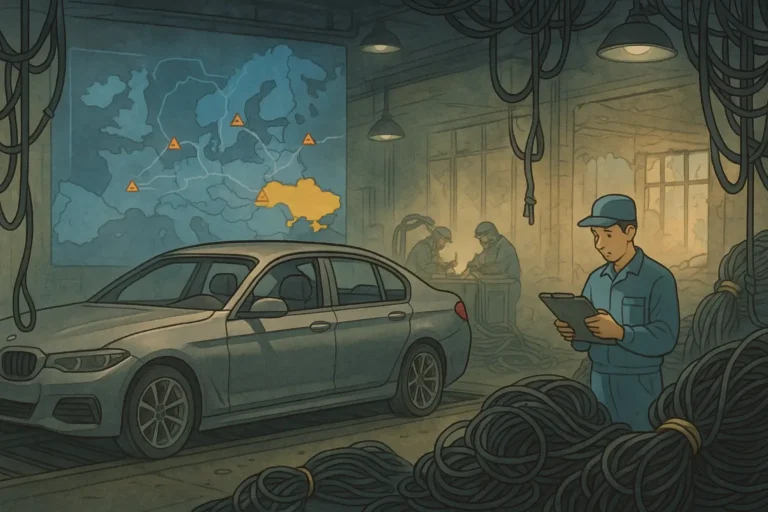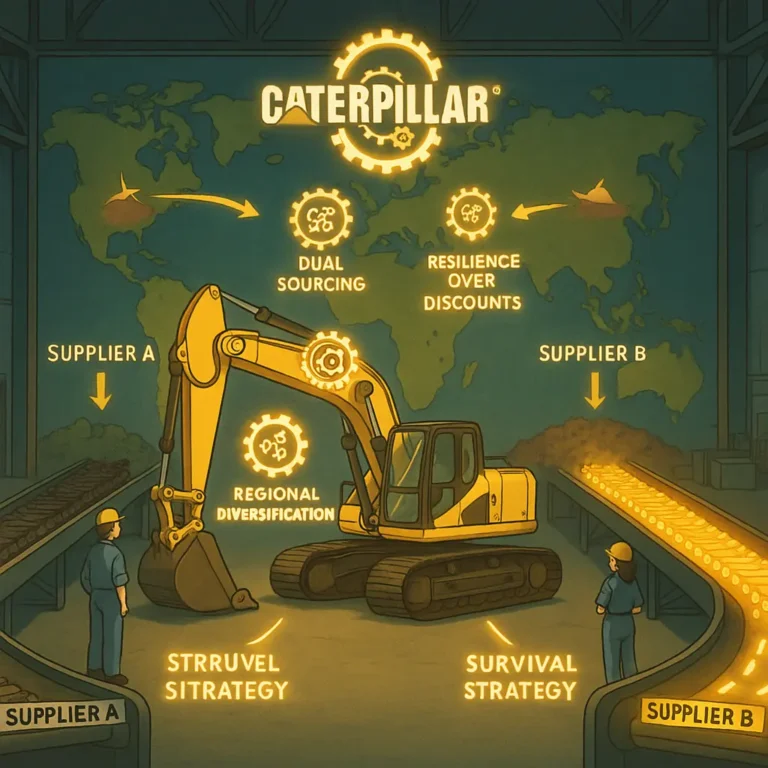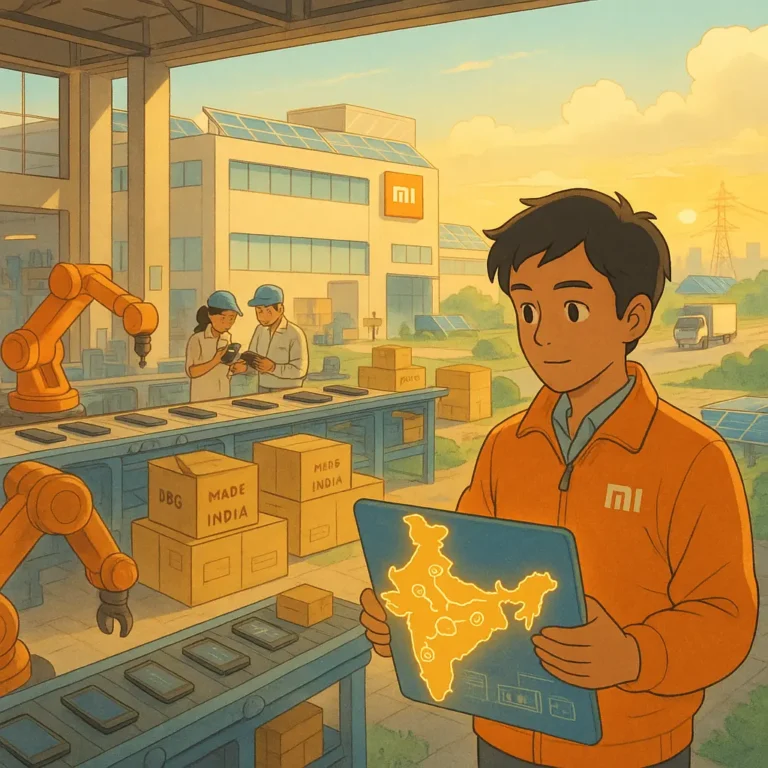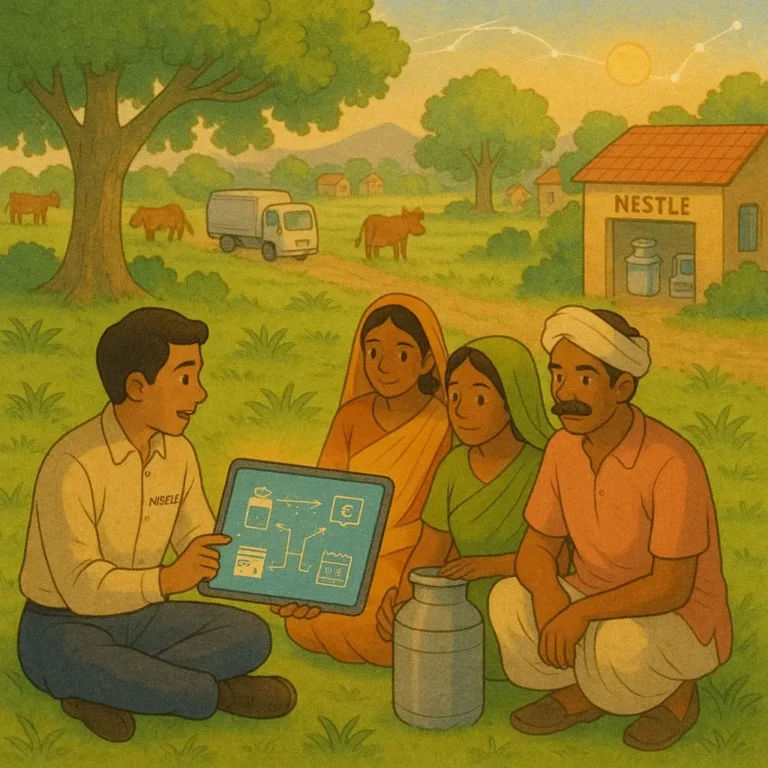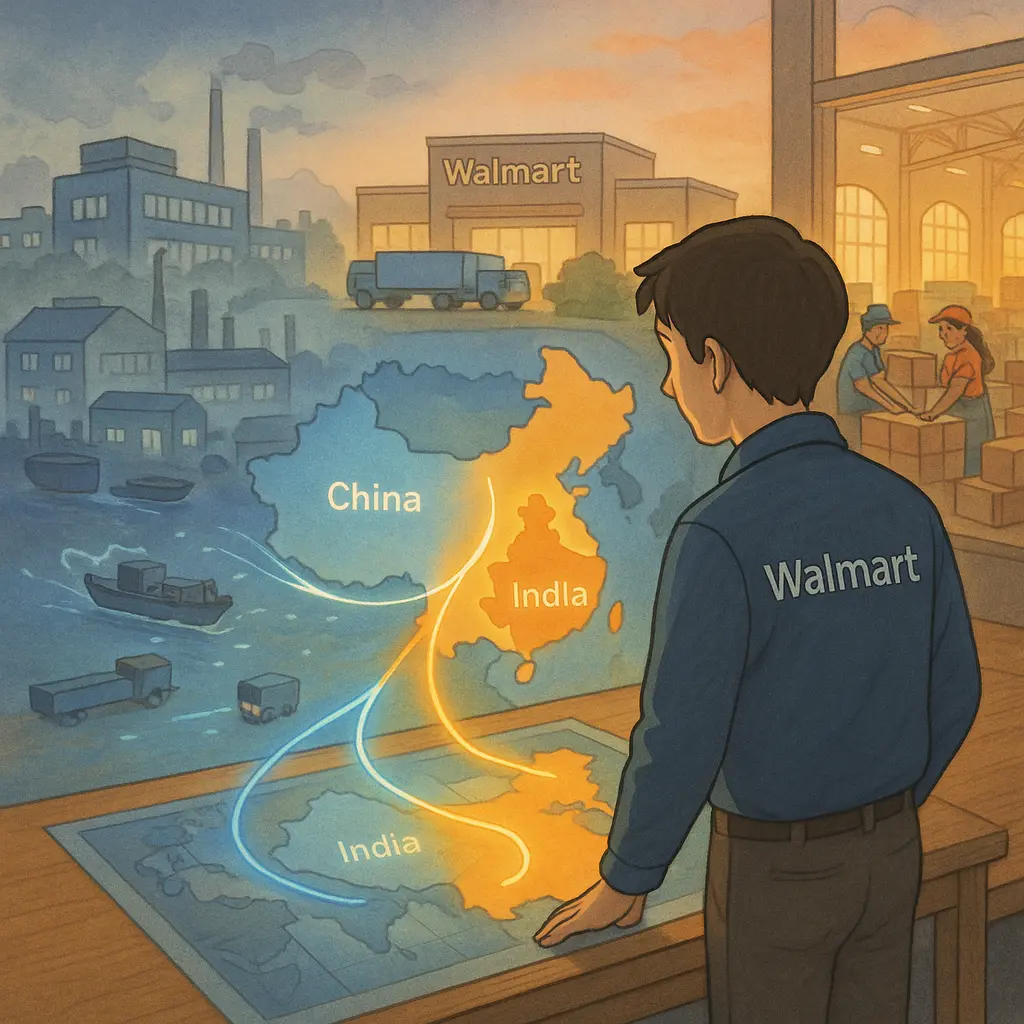
Walmart’s sourcing shift began almost a decade after a mix of cost pressures, geopolitical factors, and a quest for supply chain resilience forced it to act.
But the company is not alone.
Although it has been slow, supply chains are increasingly shifting from China due to recent economic pressures and pandemic shutdowns. In this article, we will explore why Walmart is shifting its sourcing strategy, the impact, and lessons for African supply chains.
Key Nuggets:
- Walmart’s sourcing strategy is leaning away from China because the company needs a broader supplier mix for stability.
- Tariffs, rising wages in China, and pandemic shutdowns pushed Walmart to rebalance its Asia network.
- Moving away from China widened its manufacturing base and cut exposure to geopolitical risk.
- African supply chains can draw lessons on routing, vendor growth, and long-term sourcing stability.
Why Walmart’s Sourcing Shift Away From China is Happening
In 2018, only about 2% of Walmart’s U.S. imports came from India. By January–August 2023, that share leaped to roughly 25%, while China’s share fell from 80% to about 60% in the same period.
It was one of the fastest sourcing shifts in modern retail.
Walmart ultimately made the shift because its heavy dependence on China left it exposed to shocks that hit hard during the last decade.
For instance, the trade war between Washington and Beijing has raised sourcing costs and placed pressure on retail prices. And it’s not just a recent phenomenon.
As early as 2019, Walmart had to ask Chinese suppliers to cut prices to absorb the tariff strain, something many could not sustain at scale.
China is also changing, especially as the country’s economy continues to improve. Factory wages are rising, with a minimum wage of roughly $199–$376 per month in coastal China, which has raised production costs.
Across the border, India offers wages closer to $108–$180 per month, giving Walmart relief on labor-intensive items like apparel, toys, and home goods. That difference changed the sourcing math.
However, COVID-19 revealed the deepest weakness. Lockdowns in China froze output and clogged ports.
Walmart recognized the danger of relying on a single country for most of its imports. Andrea Albright, Walmart’s Executive Vice President of Sourcing, said the company “can’t be reliant on any one supplier or geography” because it wants to guard shoppers from disruptions.
It was that thought that guided the next moves.
But U.S. policies also played a role in nudging Walmart toward India.
For instance, in 2022, Washington, through then-US Treasury Secretary Janet Yellen, backed friendshoring, which steered American companies toward trusted partners, such as India, to build supply chain resilience.
Taken together, rising costs in China, policy tensions, wage gaps, and pandemic disruption all pushed Walmart toward a broader network anchored in India.
Read More: How Nestlé’s Digital Procurement Platform Transformed Its Dairy Supply Chain in India.
How Walmart’s Sourcing Strategy Moved
Instead of treating the shift from China as a quick relocation, Walmart treated it as a rebuild.
The first step came through volume rebalancing, which saw India’s share rise from about 2% in 2018 to about 25% in 2023.
Then came the investment in suppliers. Walmart strengthened its Global Sourcing office in Bangalore and expanded its programs nationwide.
The Vriddhi supplier development program trained more than 70,000 small producers in export standards, packaging, finance, and production improvement.
Walmart wanted Indian factories to meet global volume and compliance requirements, so it built long-term support rather than waiting for suppliers to “figure it out.”
The retailer also met with India’s leadership. CEO Doug McMillon met Prime Minister Narendra Modi in 2023, where Walmart reaffirmed its plan to increase sourcing and support India’s export push.
India responded by improving customs systems, digitizing paperwork, and building links between ports and inland hubs.
This approach of long-term support, active vendor training, and deep local presence turned India into a stable partner rather than a backup plan.
Read More: Why Mattel’s 2007 Toy Recall Happened and the Impact.
What the Supply Chain Looked Like Behind the Shift
Sourcing from India created a different logistics rhythm.
Goods from southern China move across the Pacific to the U.S. West Coast. Meanwhile, goods from India take the Indian Ocean route, pass through the Suez Canal, then head toward the East Coast or Gulf Coast.
The distance from India is just about the same (25-35 days).
But while Chinese manufacturing hubs like Shenzhen, Shanghai, and Ningbo typically have more efficient ports, those in India, such as Mundra Port and JNPT near Mumbai, are still evolving, and bottlenecks can occur during peak seasons.
In recent years, as more businesses source from the country, these ports in India have improved handling times, and customs reforms have also helped exporters clear cargo faster.
On Walmart’s end, the company has adjusted by sharpening lead-time planning and using stronger forecasting. Its supply chain teams used analytics to plan inventory buffers, run multi-country routing, and reduce the risk of stockouts during global shocks.
The company treated the wider network as a strength rather than a burden.
Do you want more supply chain stories like this? Subscribe here
The Impact of Walmart’s Rebalanced Sourcing Strategy
Shifting its sourcing strategy changed Walmart’s global footprint.
For starters, the retailer reduced pressure on its China-heavy sourcing map by spreading risk across India and other Asian markets. The result of that was a more stable supply chain during geopolitical shifts.
Walmart also reduced exposure to tariff waves targeting Chinese-made goods.
Demand from Walmart helped local factories scale production, hire more workers, and upgrade equipment.
The company’s goal of sourcing $10 billion per year from India added pressure for continuous improvement across manufacturing clusters in Bangalore, Mumbai, Jaipur, and Tiruppur.
For Walmart, though, the biggest change was control. By diversifying its sourcing strategy, the company gained the flexibility it needed to adjust its routing, switch vendors, and protect seasonal demand even when one region slowed.
This mix of partners is now part of its long-term global sourcing strategy.
Read More: Sustainability Lessons From the Rana Plaza Factory Collapse in Bangladesh.
Lessons From the Story
Walmart’s sourcing shift from China to India is emblematic of a new paradigm in global supply chain management, and, in Walmart’s case, offers key lessons for supply chains.
1 Spread Supplier Risk Across Regions
Walmart’s shift from China is proof that no company should rely on a single country for most of its sourcing. When tariffs rise or situations like the lockdowns hit, the entire supply chain gets exposed, which can be really problematic depending on the level of exposure.
Sourcing from different regions helps you spread risks early and avoid disruptions.
2 Balance Cost With Long-Term Stability
India offered cheaper wages, but China offered more infrastructure and efficiency. Cheaper doesn’t always mean safer, which is why Walmart did not entirely move its sourcing operations to India.
Savings tend to vanish when delays are introduced and stability matters more than short-term gains.
3 Use Technology To Manage a Wider Supplier Mix
Walmart used analytics, forecasting, and routing tools to manage its broader supplier map, which was crucial for handling forecasting spikes, shipping windows, and lead-time swings when India and China ran on different rhythms.
Any supply chain working across countries needs clear data, clean visibility, and strong collaboration tools. Technology steadies movement when suppliers come from different regions.
Do you want more supply chain stories like this? Subscribe here
How African Supply Chains Can Apply These Lessons
African supply chains can grow stronger using the same approach as Walmart’s sourcing shift, although with slight nuances. For example:
1. Building Regional Sourcing Strength
African supply chains can pull some volume closer to home. Products that rely on textiles, packaging, or metalwork can come from nearby clusters rather than distant markets. This protects production during external shocks.
2. Strengthen Manufacturer Capabilities
Walmart’s progress in India came from helping suppliers meet global norms. African manufacturers can rise through programs that train managers, teach export standards, improve packaging, and raise product quality. Small changes can widen market access.
3. Improve Port Systems and Inland Transport
India increased exports after improving ports such as Mundra and JNPT. African nations can boost manufacturing output by strengthening port operations, reducing wait times, digitizing customs, and improving trucking reliability.
4. Build Multi-Country Supplier Maps
African retailers reduce exposure to disruptions by spreading procurement across regions rather than relying on a single country. Blended sourcing keeps inventory steady during shocks.
5. Use Technology for Visibility
African supply chains can prevent delays by leveraging digital tracking tools and improved demand planning. Visibility makes the chain predictable.

Obinabo Tochukwu Tabansi is a supply chain digital writer (Content writer & Ghostwriter) helping professionals and business owners across Africa learn from real-world supply chain wins and setbacks and apply proven strategies to their own operations. He also crafts social content for logistics and supply chain companies, turning their solutions and insights into engaging posts that drive visibility and trust.

